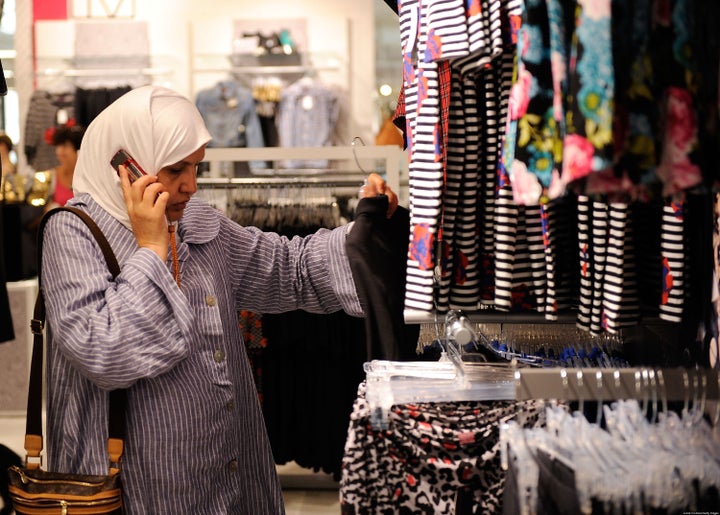
Reading a little Scripture instead of a woman's magazine can make you feel better about how you look. No brainer? Here's more: A recent study of nearly 300 Jordanian teens and their moms suggests that religious belief itself insulates young women from the impact of media hype about the female form.
The study, conducted in the summer of 2009 by Dr. Teresa King and two of her students, surveyed students at Yarmouk University in Irbid, Jordan, on their feelings about their bodies, from hair to feet, and compared their responses to those from students at Bridgewater State University near Boston, where King teaches. Both groups were also asked about their religious beliefs. The preliminary results show that the Jordanians, who were measurably more engaged with their faith, were also more satisfied with their shape. "In almost all nuances they reported feeling better about their appearance," King told me in an interview.
King and her students, Heidi Woofenden and Kaitlyn Baptista, presented their findings in New York at a conference titled "Hidden in Plain Sight: Pleasures, Policy and Politics of Muslim Women and Their Bodies," sponsored by the Muslim Women's Institute for Research and Development.
Religiosity and positive body image have been correlated in earlier studies. What made the Yarmouk University study remarkable is that, like most women in Jordan, those who participated in this study cover their hair and much of their skin whenever they leave the house.
Not that wearing a hijab -- the covering of women's bodies favored by many Muslims -- means students at Yarmouk cared less about media images of women. Like teens everywhere, the Jordanians rabidly consult television and magazines for information about how to look and dress at a higher rate, the researchers were surprised to find, than their American counterparts. But, said King, "for some reason they are not internalizing the media's message."
The study made no statistical link between the hijab and positive body image. Indeed, says King, "in America, we get the opposite ... The more you don't like your looks, the more you cover up" But one slide, citing one covered woman's gratified escape from the media's relentless attention to body size, suggested where attitudes about the hijab might be heading, especially as the practice moves West.
In a roundtable that preceded King's talk, the hijab dominated the discussion. None of the mostly Muslim teachers and activists in the room argued for or against covering women's bodies. The audience laughed when one young woman told how non-Muslims often assumed she was brainwashed because she was covered. The group nodded thoughtfully when a woman in a black turtleneck and slacks said Muslims assumed she was not a faithful Muslim because she wasn't in a hijab.
Instead, the participants in the roundtable agreed, all women's dress has to be understood in the context of the surrounding culture. Shqipe Malushi, who counsels both Middle Eastern women and U.S. military personnel on Islamic cultural issues, explained that she has no problem expressing herself while wearing an obligatory burka in Afghanistan, but feels imprisoned by traditional Muslim dress elsewhere. Modesty, said Malushi, should even be understood in the context of the person. Rebuked at a recent lecture by a man who wanted to know why she wasn't covered, Malushi said she replied, "How do you know I'm not?"
What this discussion of the hijab presumes is choice: In the United States, women can escape demands to cover themselves or demands not to, fashioning a new set of meanings for an ancient practice. Elif Kavakci, a fashion designer whose head covering was subtly spangled with sequins, grew up in Turkey, where traditional dress is heavily discouraged. Kavakci told the conference that she decided to cover herself at age 12, "because nobody was going to tell me what to do." After moving to Dallas as a young woman, Kavakci felt liberated to wear the hijab "as a personal act," she said. "People would ask if my hijab was religious or fashionable. It was both."